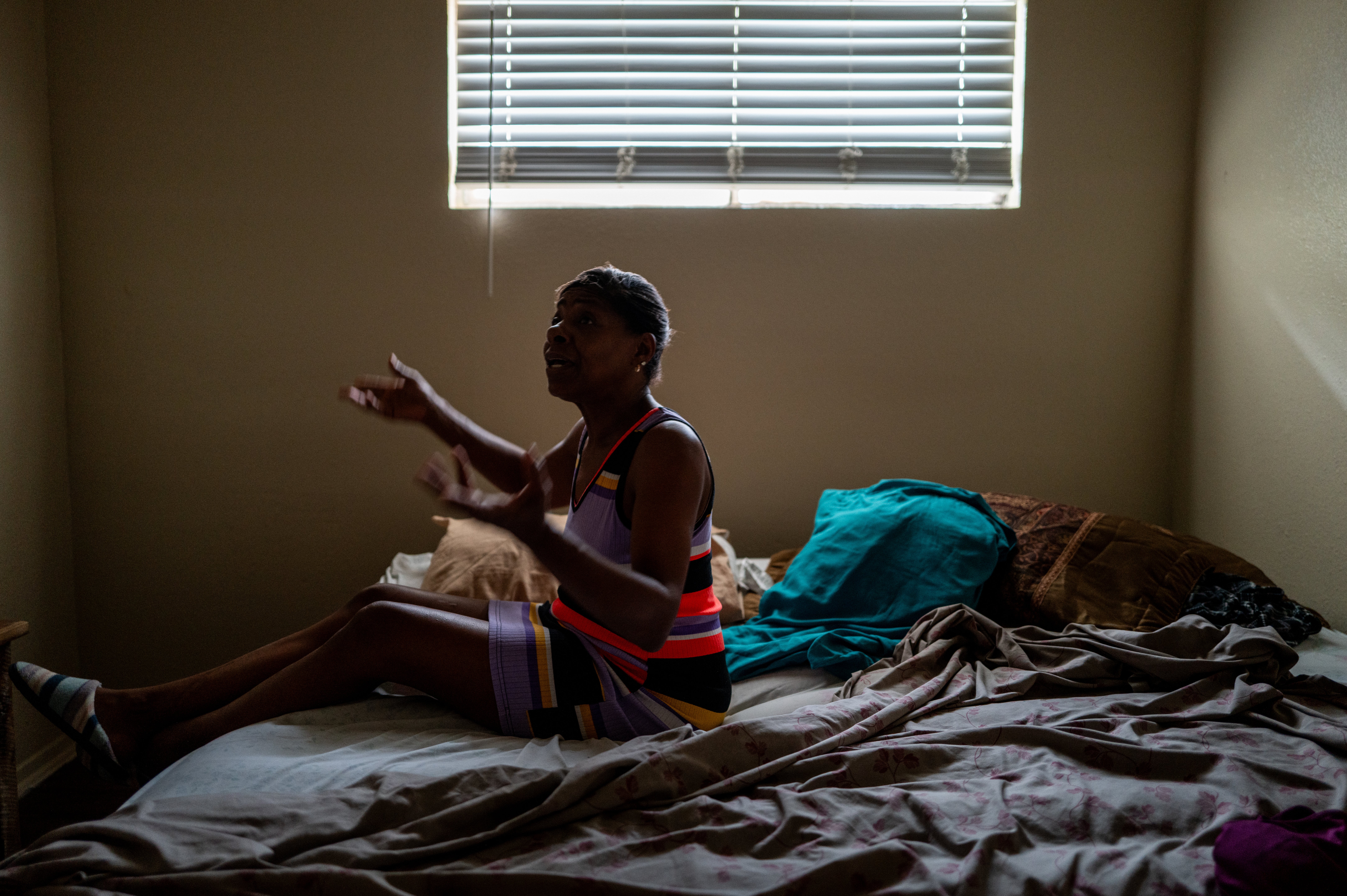Fears for hundreds of thousands without power in post-Beryl Texas as dangerous heatwave continues
Federal officials warn that thousands of homes without power after hurricane will ‘aggravate the risk for heat-related illnesses’
Your support helps us to tell the story
From reproductive rights to climate change to Big Tech, The Independent is on the ground when the story is developing. Whether it's investigating the financials of Elon Musk's pro-Trump PAC or producing our latest documentary, 'The A Word', which shines a light on the American women fighting for reproductive rights, we know how important it is to parse out the facts from the messaging.
At such a critical moment in US history, we need reporters on the ground. Your donation allows us to keep sending journalists to speak to both sides of the story.
The Independent is trusted by Americans across the entire political spectrum. And unlike many other quality news outlets, we choose not to lock Americans out of our reporting and analysis with paywalls. We believe quality journalism should be available to everyone, paid for by those who can afford it.
Your support makes all the difference.More than 877,000 homes and businesses remain without power in the Houston area after Hurricane Beryl struck earlier this week, leaving residents extremely vulnerable as a record-breaking heat has persisted across the US.
A heat advisory was issued for the region on Friday by the National Weather Service.
It warned of the heat index, which combines heat and humidity, of temperatures that will feel as severe as 103 degrees, levels where those without air conditioning face “the risk for heat-related illnesses,” conditions believed to have killed at least 37 people nationwide during the heatwave.
Frankie Thibideaux, 57, told CNN her Houston home had been swamped with water, then went moldy in the heat, prompting her to stay in a hotel.
“We can’t live in a place like that,” she said. “I won’t even let my dog live like those people are.”

Others have taken to sleeping in their cars to avoid the heat, though spending extended time in a running, parked car comes with its own risks from exhaling exhaust fumes.
“Pretty much everybody in my neighborhood is sleeping in their cars right now because it’s just unbearable,” Crystal Krest, 41, told USA TODAY earlier this week. “We can’t sleep in our houses.”
The heat and lack of electricity have also prompted fears of food shortages for vulnerable residents.
"I’ve lost all my foods but these noodles; all of my meat spoiled," Menifee Lucy of Houston told Fox Weather. "No power for four days now, I don’t know what to do ... I can’t cook, all I have are these noodles."
The mass power outages have decimated local infrastructure.
Boil water notices are in place across eight Texas counties, and 135 waster water treatment plants are offline, according to Texas officials.
Texas Emergency Management Chief Nim Kidd has described hospitals in a state of “internal disaster,” as Houston-area facilities are backed up, some because they feel discharging patients to homes without electricity is too unsafe.
Texas lieutenant governor Dan Patrick has argued CenterPoint, the Houston area’s main electric utility, “underestimated” Beryl, as critics suggest that the city as a whole needs to build a more resilient electric grid.
Bruce Race, director for the University of Houston’s Center of Sustainability and Resilience, told Houston Landing on Friday that the city could be prepared by burying more of its powerlines, a process known as undergrounding.
“Part of the local and regional solution might be strategic investment and undergrounding,” he said.
Records obtained by E&E News show the Biden administration rejected a request from CenterPoint last year for $100m in funding as part of a Department of Energy Program for strengthening electic poles and wires against high winds and other risks of climate change.
Temperatures across the Houston area are expected to stay above 90 degrees through the next week, according to AccuWeather, even as the center of the heatwave itself is expected to move to the central and eastern US.
“This long-duration heat wave remains extremely dangerous and deadly if not taken seriously,” according to the federal Weather Prediction Center.
Record-breaking heat has persisted across the US since the Fourth of July holiday.
Last Sunday, Las Vegas experienced its hottest day ever, at 120 degrees, as did Palm Springs, California, two days before, at 124 degrees.
On Wednesday Las Vegas also hit its record fifth consecutive day of temperatures hitting 115 degrees Fahrenheit (46.1 Celsius) or greater.
Such extreme heat and weather — Beryl was the earliest hurricane of its strength on record — will only grow more common as the climate crisis persists and humans continue to pump greenhouse gasses into the air.
“We scientists have known for a long time — for decades — that as the world gets warmer, we’re going to see our temperature extremes [increasing],” Katharine Hayhoe, climate scientist for The Nature Conservancy, told NPR this week. “Climate change is already affecting the people we love, the places we love, and the things we love.”
Join our commenting forum
Join thought-provoking conversations, follow other Independent readers and see their replies
Comments